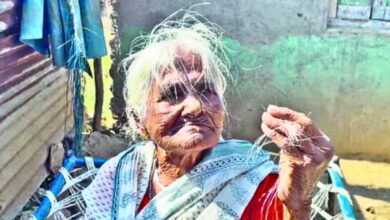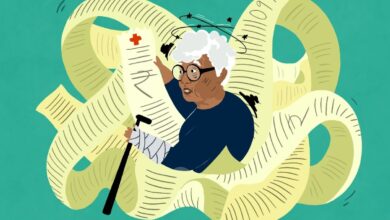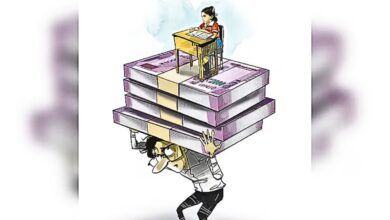Difference In Devolution Of Tax: Is It Really A North-South Divide, Propelled By Southern Ministers, Or The Northern Ministers Are Just Dodging The Questions Of Their Slow Development Over Decades Even After Getting The Lion’s Share From The Central Kitty?
The Hindi-belt states have more Members of Parliament than the southern states, but political clout hasn't helped boost economic stability, and this is one of the reasons why Southern Ministers are worried about where the money goes. If such lion’s pie of taxes is given to northern belt states, then why, even after several decades, are they still lagging behind?

The central government release funds to state governments. The recent disbursement of funds has created a moment of contention between many state governments and the Centre. With the population rewarded a higher weightage over performance, the revenue-sharing formula in the devolution of tax has resulted in friction between certain States and the Centre. To understand the significant reason for friction, first, see the difference in amounts each state got for every rupee they contributed to the Central tax kitty.
- For every ₹1 that Tamil Nadu gives the Centre, it gets back 29 paise (₹ 0.29).
- Karnataka gets 15 paise.
- Telangana gets 43 paise.
- Andhra Pradesh gets 49 paise.
- Kerala gets 57 paise.
- Uttar Pradesh gets ₹2.73.
- Bihar gets back ₹7.06.

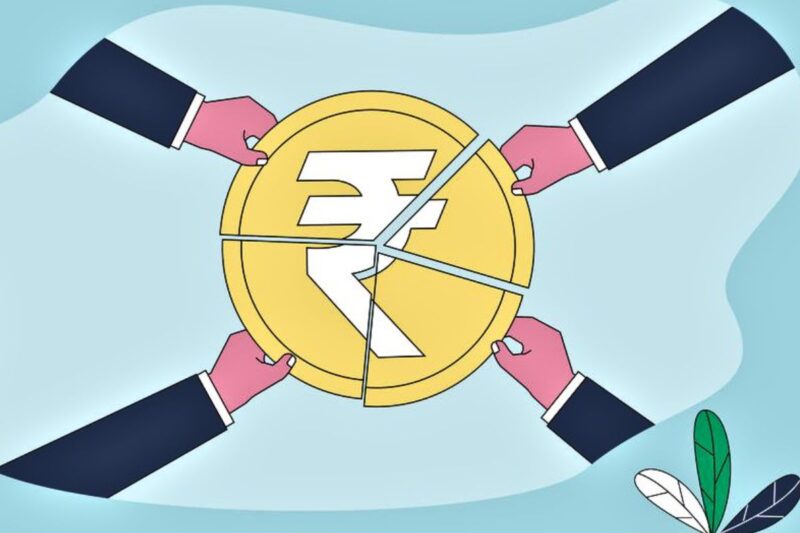
The parameters of tax distribution.
The tax collections by the Centre are pooled from States, and a part of it is given among them based on the FC’s (Finance Commission) formula. The states’ part in the divisible pool of taxes is based on each state’s requirements (population, area and, forest and ecology), the equity (per capita income difference) and the performance (own tax revenue and lower fertility rate). The weight assigned to them was 40%, equity 45%, and 15% for performance.
Notably, the 15th Finance Commission(XVFC) introduced the fertility rate parameter in the formula to reward states with reduced fertility levels. While this favoured the developed States, which have pushed their Total Fertility Rate below the replacement rate, the weightage given to this component is relatively lower than equity and requirement.
The XVFC formula is seen to be inclined in favour of some States, giving rise to wide Inter-State variations. As the population is given a higher weightage in the devolution of tax, the balance favours some northern states. This has been a nested disagreement between the Centre and the affected States.
When is the allocation of funds converted into a topic of debate?
In October last year, Tamil Nadu Finance Minister Thangam Thennarasu blamed the Union government for showing a “step-motherly attitude” towards certain States over devolution of funds. Around the same time, at a media conclave, Thiruvananthapuram Lok Sabha MP Mr Shashi Tharoor spoke about the potential dangers of political disenfranchisement in southern India when the delimitation freeze ends in 2026. These pieces of statements have brought the tussle in the distribution of Central taxes and the delimitation of constituencies to the fore.
Finance Minister of Tamil Nadu P.T.R. Palanivel Thiagarajan, in a discussion with Congress personnel, Mr Tharoor asserted that the notion of allocating funds based on the concept of population rewards those who have not been able to achieve population control.
What was the defence by the Centre?
On the defence of the Centre, Union Finance Minister Nirmala Sitharaman, in an event in Chennai, marked that if every state thinks they are giving X amount to the Centre and proportionate should be granted to them, then how will a country prosper in the pretext of such an artificial line?
Also, M. Govinda Rao, a member of the 14th Finance Commission, defended the formula. He asserts that the objective is not to return the money one gets from a State. The transfers enable a State to provide comparable levels of services. The primary rationale is horizontal equity. The taxes accrued to Tamil Nadu are not necessarily from the state. Definitely, per capita income levels increased substantially in Kerala, Karnataka, and Tamil Nadu. However, the increase need not necessarily have to do only with the States’ efforts.
Moreover, the Centre is blaming the Southern Ministers, primarily by alleging that they are creating this situation as a North-South Divide! On the day when Karnataka Congress leaders, including Chief Minister Siddaramaiah, mounted a protest in New Delhi against what they termed unfair devolution of tax money to the southern state, the BJP worked hard to puncture the North versus south comparison mounted by the Opposition.
So is it really a North-South divide propelled by the Ministers of the South, or are their say over the devolution of taxes display the actual pathetic situation of the Northern States of India?
The Southern states assert that they are not saying they should be given what UP or Bihar is getting. But they are worried about where this money goes. The crux of the problem is a lack of accountability of those states that are getting the lion’s share of the tax. Yes. Allocate more funds; they need it. However, there seems to be absolutely no accountability for where the money is going because youth from these (here, northern) states still continue to travel out of state for better prospects. How long is this going to continue?
The general lack of accountability in these states is taxing those who are performing well, and that is the problem. So, it would not be wrong to say that southern states are getting punished for their proactive measures.
In a discussion with Mr. Tharoor, Mr. Thiagarajan argues that the concern lies about what happens to all the money that goes to poorer States. Why are the states that are given higher proportions of tax are not developing? It’s not the money that they begrudge, but the lack of progress is something to worry about; it seems like they are throwing money down the well.
The Finance Minister of Tamil Nadu PTR has kept his word by addressing the issues going around and asked for discussion over the same. However, none of the finance ministers from BJP-ruled states has kept their opinions on the same; instead, they just portray the southern states as masterminds of the North-South divide. So why are Northern Minsters not giving statistical replies to the questions asked by PTR and many others about what is happening with the lion’s share of the money that is handed to them?
The Southern Ministers say they are not against equity, but this tax devolution should not adversely impact their efficiency. So, if the developing States are not incentivised to generate more tax revenue, how would the Centre then redistribute it?
Why is the parameter ‘population’ not a justified criterion to gauge the distribution of funds?
This trigger is a modification in the terms of reference for the 15th Finance Commission, which was established to plan the devolution of taxes to states. Population is and has historically been a determining factor in allocation. Previously, finance commissions used 1971 data. The 15th FC will use 2011 statistics because there is no census data after 2011. States with smaller populations claim that they will be underserved.
There is nothing called the Centre’s or State’s money; rather, it is the taxpayer’s money. Southern states contribute the maximum tax revenue to the central government, but they divert the money to the development of the North. Assertions aside, the actuality is that states with smaller populations and lower rates of population growth could be affected. Besides, population is only one of the factors—others, including progress in moving towards a replacement rate of population growth, will deliver compensatory dividends.
Political narratives are seldom linear. The southern states have produced superior results, and anger comes from the incentive structures and absence of disincentives. The articulation and underlying concern are about how states that do less get more rather than who gets more.
In 1960, the Indian government designated the top 100 most backward districts. Over 80 of them were from the Hindi heartland, including Bihar, Uttar Pradesh, Madhya Pradesh, and Rajasthan. Several decades later, a review of the 100 worst districts found that laggards had not improved. After considerable discussion and action, little had changed. According to a 2001 study by N J Kurian, no districts from Bihar, Rajasthan, Madhya Pradesh, Orissa, or Uttar Pradesh were among the top 100 districts in India.
In sharp contrast, the southern states with disadvantaged districts, such as Cudappah in Andhra Pradesh, Aurangabad in Maharashtra, and Ramanathapuram in Tamil Nadu, benefited more from new schemes than Moradabad in Uttar Pradesh, Dhenekal in Orissa, or Purulia in West Bengal.
The Hindi-belt states have more Members of Parliament than the southern states, but political clout hasn’t helped boost economic stability, and this is one of the reasons why Southern Ministers are worried about where the money goes. If such lion’s pie is given to northern belt states, then why, even after several decades, are they still lagging?
The incumbent BJP government, helmed by the CM of UP, brandishes its achievements in the sphere of development, yet even the best publicity campaigns cannot cover the ground realities in some districts.
The NITI Aayog report, 2021, on the national Multi-Dimensional Poverty Index, based on the National Family Health Survey-4 (2015-16), states that out of the four worst performing districts across the country on dimensions of health, education, and living standards, three are in Uttar Pradesh. This statement justifies the concern of southern Ministers about where the money is going if they are not being used for development.
It is worth watching, however, that the report is based on 2015-16 data from the NFHS-4, and the districts have made progress in areas such as maternal and child health, literacy, and power coverage since then.
Despite the advances, many districts continue to lag on many fronts. There are high rates of illiteracy, malnutrition among children, inadequate educational facilities, a lack of acceptable employment possibilities, deteriorating infrastructure, and poor sanitation.
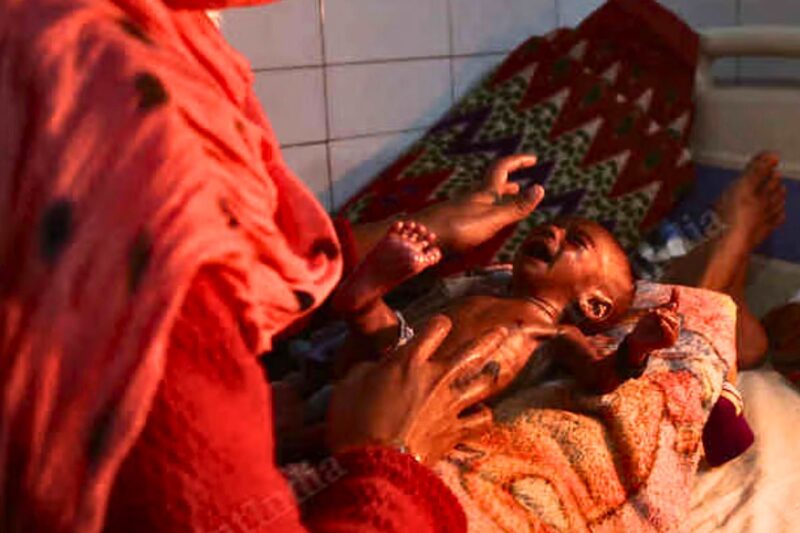
The Constitution indeed requires governments to provide a basic level of public goods and services. Therefore, population matters. But so does the government. Governance requires actions, and some of the most impactful solutions have occurred in the South. As a result, the 15th FC’s terms of reference include “Control or lack of it in incurring money on populist initiatives,” which is disturbing.
Article 1 of the Constitution says that “India, or Bharat, shall be a Union of states.” This is us. However, there is no denying that the discontent bordering on alienation stems from a genuine and perceived sense of discrimination influenced by social, cultural, religious, political, and economic interests. Perception is a high-octane, combustible mix of facts, fantasies, finger-pointing, and flaws. There are embedded questions that necessitate discourse, argument, and a mental truce.
So, is the demand of Southern ministers genuine that there is a deliberate action in the devolution of funds that is against the South?
Mr Siddaramaiah stated that the Centre has provided ₹2.80 lakh crore to Uttar Pradesh. Similarly, Bihar, Madhya Pradesh, and Rajasthan receive grants despite the fact that these states have done nothing to restrict population growth. And this is what remains the ultimate source of contention that Southern Ministers are questioning. They state that they do not have any problem with the Centre giving more money to the Northern States, but they want justice to their share along with data on what is happening with the money that flows along the North.
In the end, none of the finance ministers from the asked states stepped on the ground to answer the questions. What they are doing is just religion-based politics!

